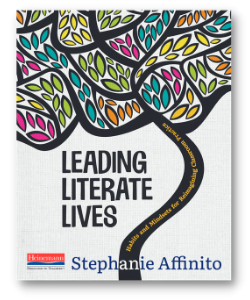
I am a voracious reader. I read for pleasure and professional growth. I read titles that are suggested and titles that are convenient. I read magazines at doctors’ offices, browse them in line at the grocery store and read. I even read the backs of cereal boxes and junk mail. Really.
I am a voracious reader. I read for pleasure and professional growth. I read titles that are suggested and titles that are convenient. I read magazines at doctors’ offices, browse them in line at the grocery store and read. I even read the backs of cereal boxes and junk mail. Really.
As a child, I had plenty of time to read and write until my literate heart was content. As I grew, it became harder to find the time to read for pleasure between work and school, but I still managed to make time. But then, I started teaching. And became a wife and a mother. And my reading life took a back seat. While it was for good reason, I missed it desperately. Reading was my form of self-care, my only hobby, my escape. And the lessons I learned from the words on the page made me a better person, a better wife and mother, a better educator. I wanted my reading life back and needed a way to figure out how to get it. I scoured the Internet for helpful tips and advice to make reading a priority in my life once again and came to a startling conclusion captured perfectly by Annie Dillard: That hit me hard. I had quickly become a master at habits and routines that ensured my children were well cared for and my work got done. But not necessarily the routines that ensured for my own well-being and what I wanted most for myself.
That hit me hard. I had quickly become a master at habits and routines that ensured my children were well cared for and my work got done. But not necessarily the routines that ensured for my own well-being and what I wanted most for myself.
It took a while for me to figure out daily routines that worked best for me to ensure I made time for daily reading and rejuvenation, but once I did, it made a drastic difference in my happiness, well-being, and even my practice as an educator. When I nourish my own reading and writing life, it becomes better. I learn lessons from characters that impact my own thinking. I learn new information that makes me happier and healthier. I explore new ideas and perspectives that I cannot experience on my own. And I gain new excitement for sharing my reading life with others, especially the teachers and students I work with.
I’ve come to learn we can mindfully plan for daily routines that invite reading and writing into our daily lives. And it all boils down to this: we must create daily habits and routines based on our own personalities and lifestyles. The first step to creating a personalized reading routine that is right for you is to ask yourself some questions:
- Are you a morning person or do you work best later into the night?
- Do you need longer stretches of time to get into a book or can you start reading on a whim?
- Can you hold yourself to your own schedule or do you need external accountability to keep going with a new habit?
- Do you prefer to read physical books or ebooks?
- Do you need total silence to read or do you read better with a bit of background noise?
- Do you love predictability or do you create new experiences?
Think about a reading routine that works best for you, try it out and revise as needed. Here are some possibilities:
- Get up ten minutes early each morning to read. You might read in bed without any distractions or start reading while your coffee brews.
- Go to bed early with a book in your hand. For some, reading in bed is the perfect way to wind down from a busy day.
- Make a reading lunch date. Pack your book in your lunch bag and choose to read instead of scroll your social media feed.
- Pair reading with driving and listen to an audiobook on your commute. Or, grab your device when you grab the leash and listen while you walk the family pet.
 To learn more about Leading Literate Lives visit Heinemann.com.
To learn more about Leading Literate Lives visit Heinemann.com.

Stephanie Affinito is an educator in the Department of Literacy Teaching and Learning at the University at Albany in New York. She has a deep love of literacy coaching and supporting teachers’ learning through technology. Stephanie creates spaces for authentic teacher learning that build expertise, spark professional curiosity and foster intentional reflection to re-imagine teaching and learning for students. She is the author of Literacy Coaching: Teaching and Learning with Digital Tools and Technology and Leading Literate Lives: Habits and Mindsets for Reimagining Classroom Practice. She presents regularly at state and national conferences on literacy coaching, teacher collaboration, and supporting teachers’ reading, writing, and learning through innovative technology.
You can connect with her online at stephanieaffinito.com and on Twitter at @AffinitoLit.


